Abstract
STUDY OBJECTIVE--The study aimed to investigate the influence the mode of administration of a questionnaire (telephone or face to face) on reports of sexual behaviour and attitudes of HIV risk among woman of reproductive age. DESIGN--Two cross sectional surveys--one, a modified random digit dialing telephone survey, the second, a face to face street sample--were carried out by the same interviewers using similar questionnaires in the same neighbourhoods. SETTING AND PARTICIPANTS--Two socially deprived, inner city neighbourhoods of Baltimore City were assessed in early 1990 before a community health intervention was carried out in one of them. Women between 17 and 35 years were surveyed. MAIN RESULTS--Altogether 775 and 416 women in the target age group were interviewed by telephone and face to face methods: the response rates were 66.4% and 77% respectively. Telephone respondents tended to be older, had more education, were more often married, were less likely to live in subsidised housing, and were more likely to report HIV testing. The proportions of respondents who reported a previous abortion and had had a surgical sterilisation were higher among the telephone respondents (34.7% v 24.1% and 26.4% v 20.6%, respectively). With regard to sexual risk behaviour, the only statistically significant differences were found in the proportion who reported having used drugs (10.6% of the face to face v 2.4% of the telephone sample) or alcohol (30.5% v 16.3%) at last sexual intercourse. The observed method effect on these variables remained unchanged after adjusting for age, education, employment, and marital status. This effect was even stronger for a subgroup of face to face respondents who reported not having a telephone at home. The adjusted odds ratios for reporting alcohol consumption and use of drugs at the last sexual encounter in this group compared with the telephone respondents were 3.7 (2.1, 6.6) and 14.1 (5.7, 34.5) respectively. CONCLUSIONS--Despite the socioeconomic bias associated with the mode of data collection, there are only a few differences between the telephone and personal survey methods in reports of sexual behaviour. These differences are mostly concentrated in young women (under 20 years), and in a particularly socioeconomically deprived subgroup identified through telephone ownership.
Full text
PDF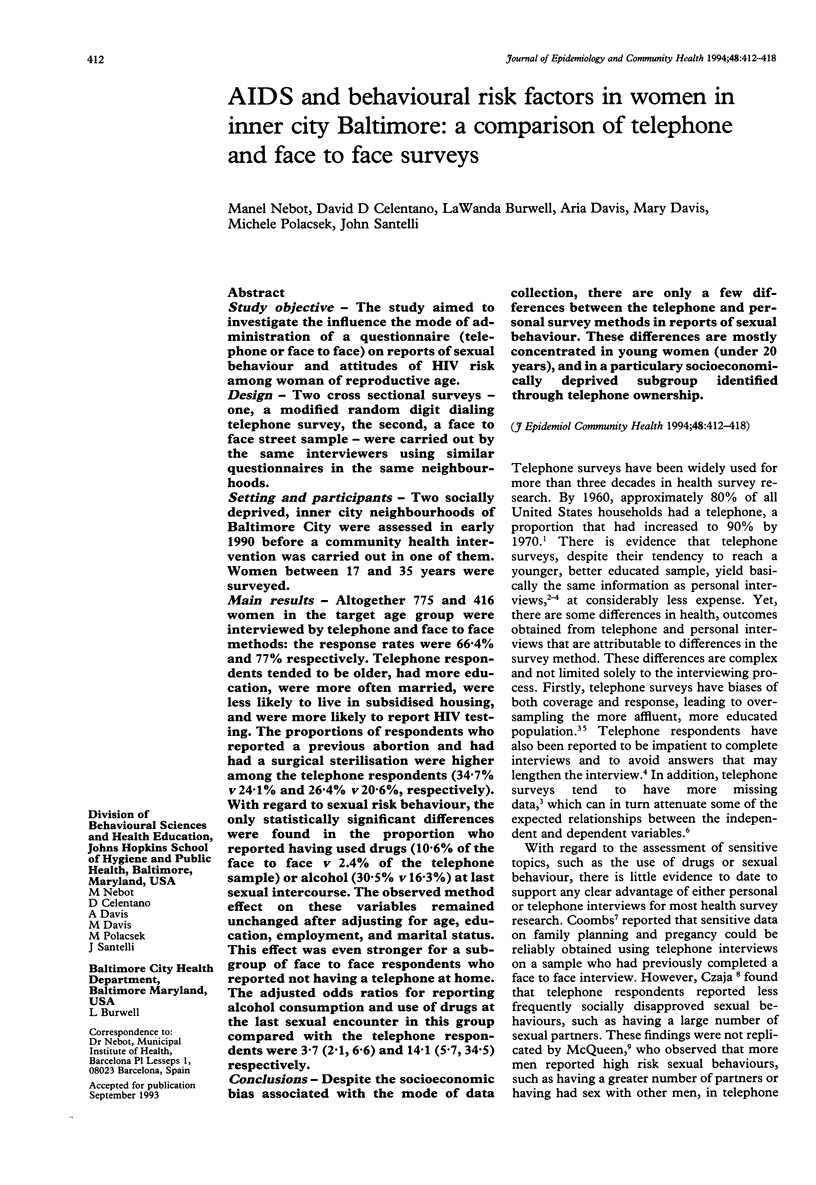
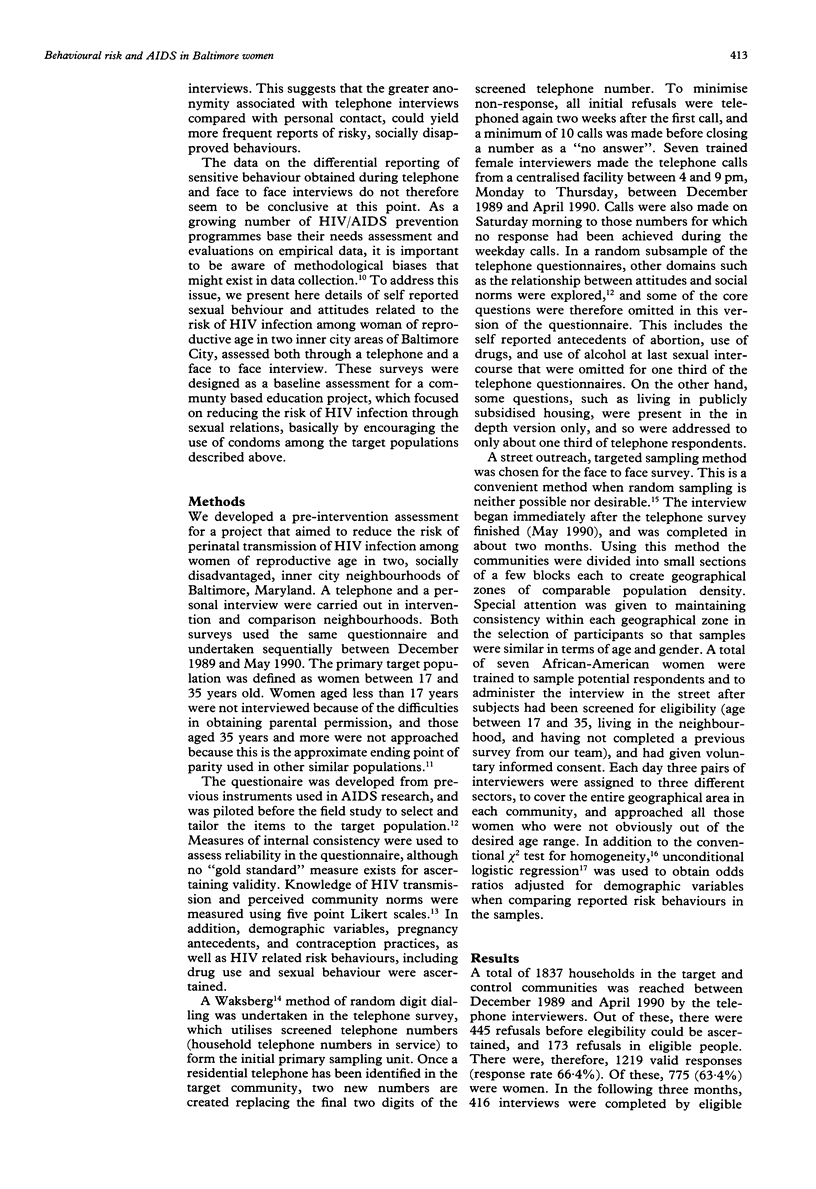
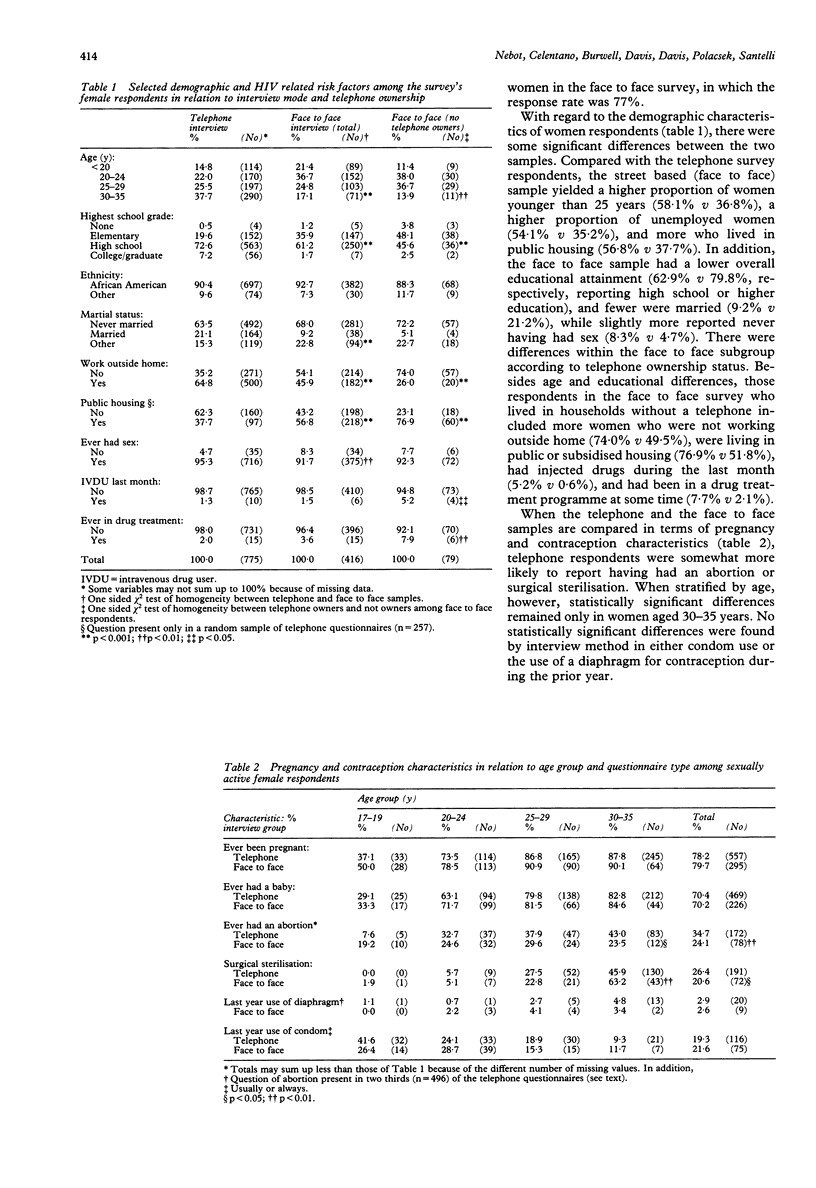
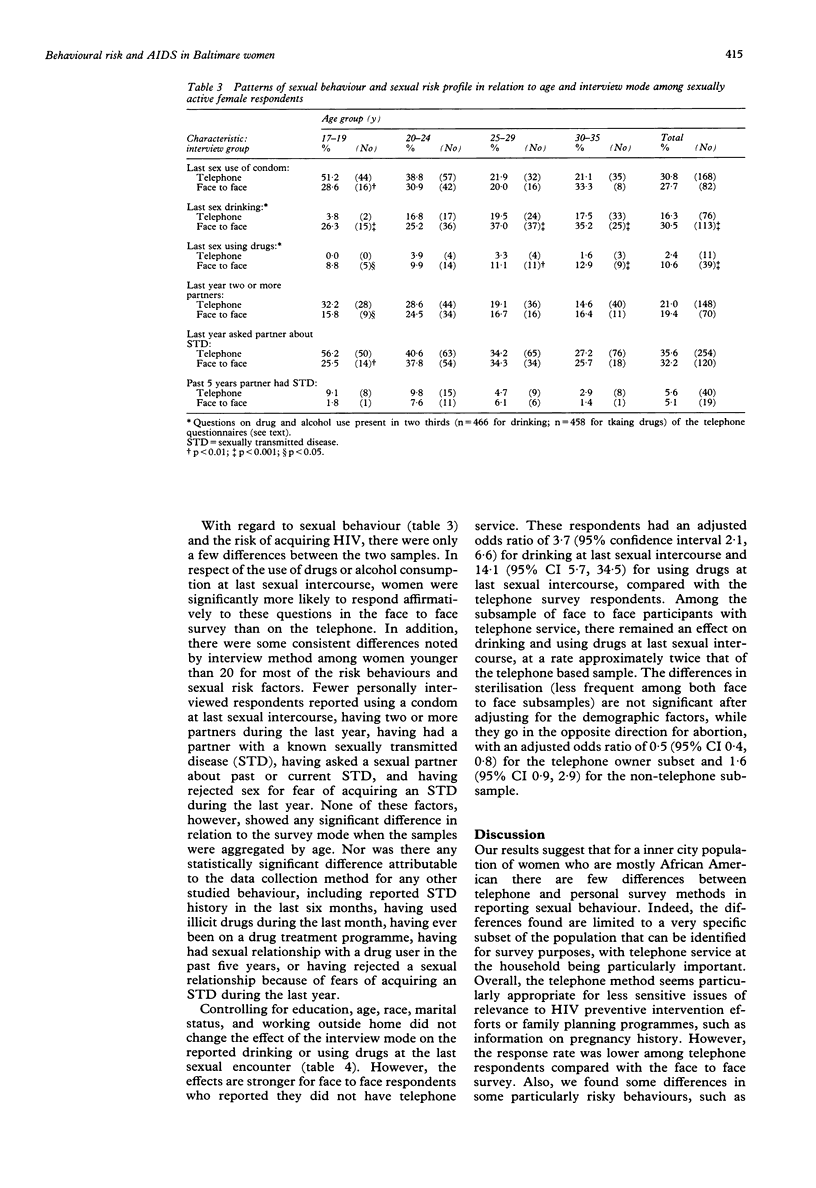
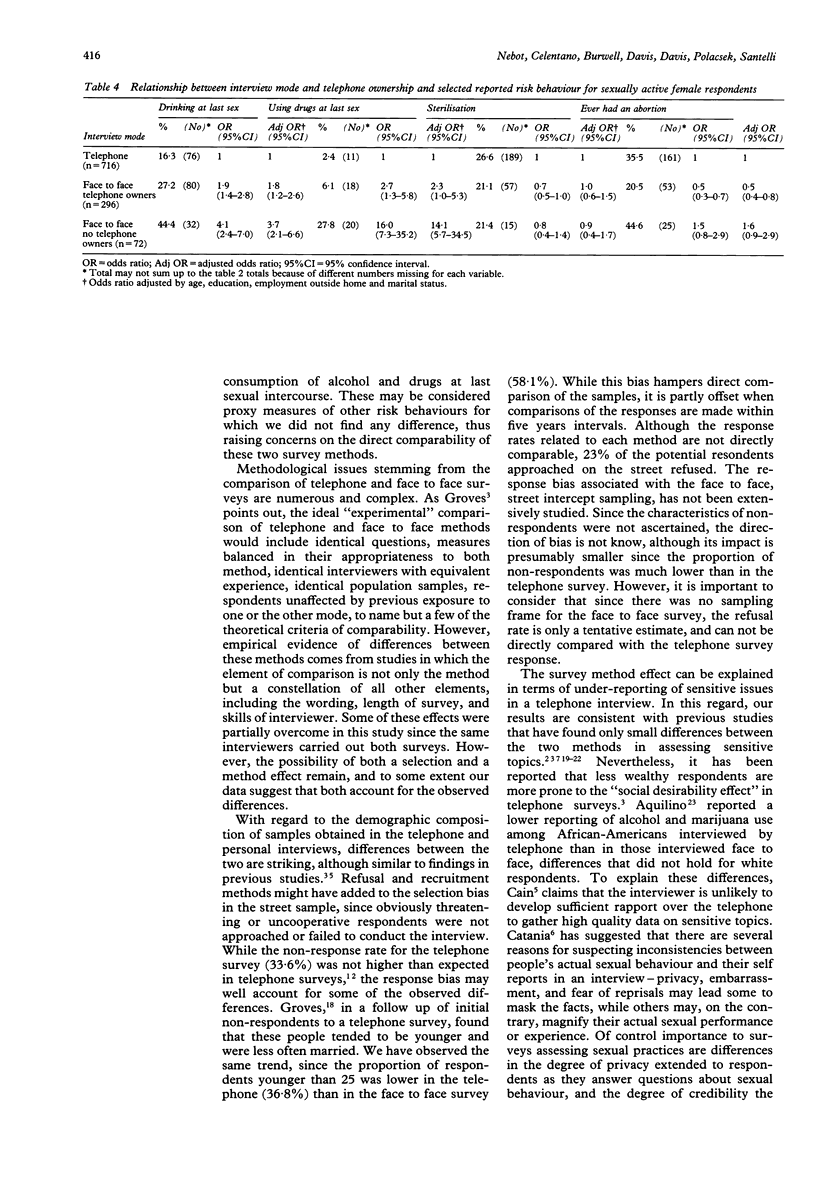
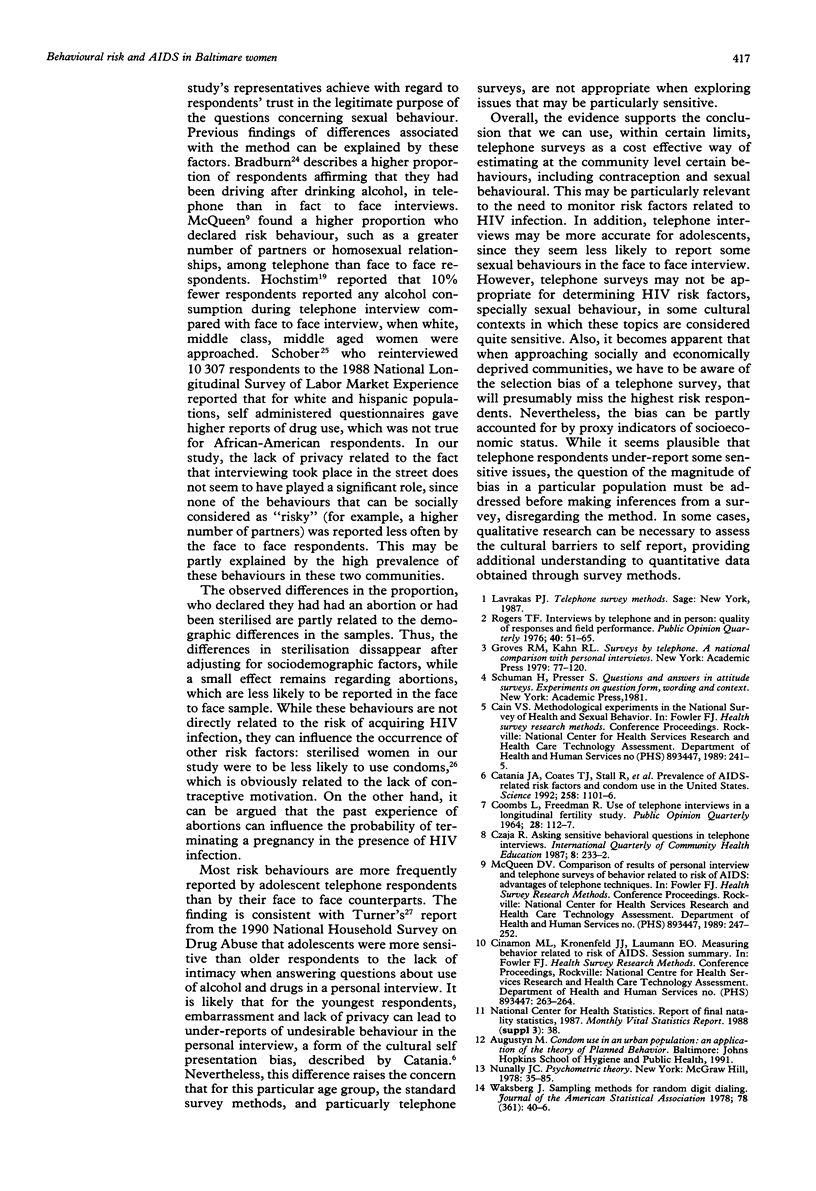

Selected References
These references are in PubMed. This may not be the complete list of references from this article.
- Catania J. A., Coates T. J., Stall R., Turner H., Peterson J., Hearst N., Dolcini M. M., Hudes E., Gagnon J., Wiley J. Prevalence of AIDS-related risk factors and condom use in the United States. Science. 1992 Nov 13;258(5085):1101–1106. doi: 10.1126/science.1439818. [DOI] [PubMed] [Google Scholar]


